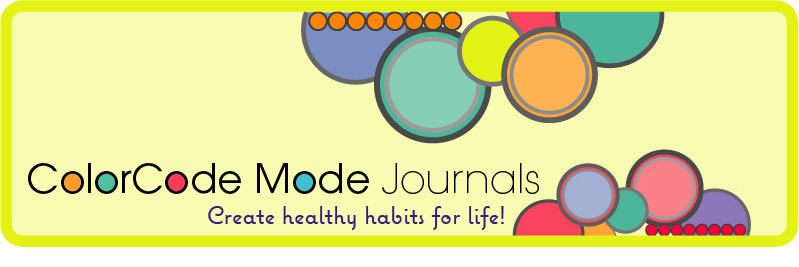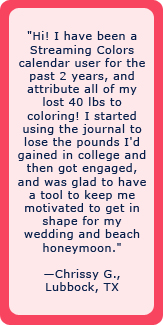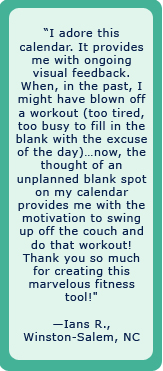Can Jamie Oliver's Food Revolution change America's eating habits?
Jen, the mom at Luhrs Media, writes after watching the first two hours (twice) of Jamie Oliver's Food Revolution:
I couldn't wait to see what would happen when that crazy Brit hit American shores.

I've been dedicated to healthy childhood nutrition for over thirty years, and was already an admirer of what Jamie's done to change school cafeteria food in England.
Would American audiences tune him out? (I'm still not over my disappointment at how low the ratings were for Shaquille O'Neal's show to help obese middle-school teens. If a popular American like Shaq can't engage TV audiences, what hope does a "foreigner" have?)
Or would they tune in to his message and his antics?
Turns out Jamie's ratings were surprisingly good.
Monitoring what people were saying on the web the next day, it's clear Jamie hit a lot of emotional nerves with people. Talking about weight and the very food we eat can do that.
Seems everyone has a different takeaway. So do I.
Here's my recap and comments based on decades of trying to figure out what works to help people develop healthier habits. (This post is long, but Jamie gave us a lot to digest, if you'll forgive the pun.)
Who's watching this?
My first thought is—who exactly is watching? The people who need the most help with their eating habits, or the people who already know how to eat healthy and are hoping that the people who need the most help are watching?
It's not going to help much if Jamie simply preaches to the choir. (Although I do think he was smart to get buy-in at the local church.)
So far, I've only seen the ratings broken down by age group. But toward the end of this post, I'll tell you what I saw that made me wonder if advertisers didn't have more specific information.
NO ONE likes to be picked on for how they eat—or cook
Jamie starts his reality show/quest in Huntington, West Virginia, statistically the unhealthiest city in the increasingly unhealthy U.S. Nearly half the adults in Huntington are considered obese, and the higher death rates due to obesity attest to the seriousness of the problem.
We can all get a little defensive about our weight and our eating habits, but I can't imagine a more volatile combination than a successful British chef (cheeky attitude, English accent and all) criticizing the eating habits and nutritional knowledge of West Virginians, who are already sensitive about being characterized as backwards.
Wait, yes I can. Add in criticism of the low-paid, dedicated school cooks who take pride in efficiently feeding hundreds of kids a day on a meager budget, obeying (as they must) government rules and guidelines that sound scientific, but in fact capitulate to highly processed foods over the freshly prepared. (Or, as Jamie would say of the USDA guidelines, "they're rubbish.")
School cooks, like the defiant "lean, mean processed-food cookin' machine", Alice Gue, are but tiny, tiny cogs in the vast corporate and government re-shaping of America's food sensibilities (insensibilities?) over the past three decades or so.
There's a reason Jamie's calling for a revolution
I know I sound as though I came over on the Mayflower when I mention that I may be of the last American generation that was reared (for the most part) on scratch cooking and real food. Fast food, convenience foods, and highly processed foods were in their infancy when I was growing up. (Miraculously, and against all odds by today's standards, ordinary people were able to cook foods from scratch. Actually, it wasn't a big deal. If you have enough intelligence to operate a cell phone or computer, you probably have the intelligence to read a recipe and prepare it.)
On the rare days when our school cafeteria served "mystery meat", our taste buds told us that this was some way over-processed, manufactured crap of unrecognizable origin, and a lot of it went in the garbage can. (Mine did, despite having been trained to always clean my plate in deference to the starving babies in China.) We'd rather go hungry than eat that slippery conglomeration of meat-related products.
Now, day after day, kids happily gobble down deep-fried chicken "nuggets" made of a strained, ground-up mess of left-over chicken carcass, tendons, extra skin, artificial flavorings and chemical stabilizers, as shown in Jamie's failed "experiment" designed to gross out the kids by showing them the slimy, gooey mess they would be eating—and which they all said they wanted to eat anyway because they were hungry.
Note to Jamie: Make sure the kids are fed before doing this experiment the next time. I can also attest to the popularity of those "friendly shapes" because we use lots of circles (but in a good way) in our color-coded food diary. Your big downfall was probably the breading that disguised the ugly mess inside, and the familiar aroma of it cooking in that hot grease for which so many families have a deep fondness. (There's a reason the Edwards were solemn at the burial of their deep-fat fryer.)
The lost art of eating real food
From a very young age, taste-buds are being trained to prefer the deep-fried and the artificial. Kids eat what they know, and this is what they're being given almost as soon as they can eat finger food! Real food seems strange to many children, and they are ignorant about even the most basic vegetables (as Jamie's vegetable quiz showed.)
Many young parents don't know any better because they too were raised on the same junk. Everyone drank the Kool-Aid that the "happiest" of meals were deep-fried, artificial, and came with a prize, in a box, from the car. Vegetables were out. Finger foods were in, and as Jamie showed, some eating utensils have become strange relics from the past that children have no idea how to use.
Cooking from scratch--what's that? Even if it takes just as long, or longer, and costs just as much to prepare chemically-laden Hamburger Helper from a box, somehow it's not in our consciousness to think we could have prepared a delicious, nutritious pasta meal using wholesome basic ingredients.
Soda pop has become a basic food group. The milk in Huntington's Central City Elementary School has to be flavored, loaded with sugar and put in colorful plastic packaging to get today's kids to drink it?
Whether the human body can adapt to this strange, substandard and potentially toxic feeding of our young ones remains to be seen.
(Ironically, I've noticed that TV commercials are now touting the importance of feeding our cats and dogs highly-nutritious and more natural meats and sea foods that include Omega-3's, so I'm hoping some of this nutritional awareness might rub off on humans.)
This redefinition of "food," "cooking" and "eating" is what Jamie Oliver is really up against, and it's all ACROSS America, spreading around the globe with American fast-food chains and highly-processed packaged food brands.
But Jamie probably already knows how pervasive it is, or he wouldn't have used the word "Revolution" in his show title.
This is the food that is killing your family
Like most people, I respond to visuals. What a powerful visual it was when Jamie piled the Edwards' family kitchen table with all the junky, unhealthy, monochromatic "golden brown" food they eat and told mom, Stacy, that this was the food that was going to shorten her kids' life span.
"I needed to get the Edwards to realize if you want to be healthier, if you want to look good, then you just gotta cook from raw ingredients....Quick, cheap nutritious meals is what it's all about and that's what we've gotta do in Huntington."
He's a little disappointed that they didn't 100% jump into his program, use up all the veggies he provided for the week's recipes, and eschew fast food and pizzas. But this is where I come in, to remind Jamie and everybody that small, gradual changes are easier to live with and more likely to become a natural part of your lifestyle.
From a health behavior change point of view, it's unlikely that all of the Edwards family was "ready" to make such a drastic change.
If the Edwards would set a goal to eat a certain number of healthy, cooked-from-scratch meals together each week, their tastes would gradually change. They would probably begin seeing weight and health changes that could motivate them to add more healthy meals each week, and perhaps start getting more active.
It took years, perhaps all their lives, to learn bad eating habits. It takes awhile to replace them with healthier new ones.
You have to pay attention and track (and celebrate) your small successes, or you'll quickly fall back into unhealthy old habits. We created our color-in journals so that it would be quick, easy and fun for people to do that. In the next few weeks I'll post examples of how any family can use our Lean Mode, Color Code—Not Your Usual Food Diary to track the whole family's eating habits, and have fun making some of the changes Jamie is championing. People will be surprised at how easy it is to change.
Cooking is not rocket science, AND it's actually "fun!"
It's not that hard to cook up really tasty meals using simple, basic ingredients, but through our brainwashing by food companies, many people don't know that, unless someone cooks alongside them to show them how.
Bravo to Jamie for setting up a Food Revolution kitchen in town where people can come and cook and learn to make recipes for free.
Teen Justin Edwards seems to be transformed by cooking with Jamie.
"You've got to cook like you walk. Throw your shoulders back, head forward and walk toward it. Kick some ass. Knife skills! Style it! Kids can cook. Smile when you cook!...In forty minutes, we went miles."
"Am I strange?", adds Jamie to his repartee.
"Maybe," answers Justin.
"I am strange."
Justin says that this was the most fun he's had in his entire life. (There's our favorite fitness word again, "fun.") Really, you mean all those passive "happy" meals didn't make you happy after all?
You can't ignore the cost
Once you've tasted great food, you realize how awful a lot of what you've eaten truly was. The Edwards father even surprises Jamie by saying he liked the taste of all the meals Jamie provided.
Some people have commented on the web that not everyone can afford healthy foods like fruits, vegetables, fish, etc. and I agree that that is another huge, systemic barrier to changing America's eating habits.
Judging by the foods in the Edwards "before" refrigerator, they had enough of a food budget to buy more wholesome foods for scratch cooking.
But many American families don't, and that's one reason I'd like to see a reduction in federal subsidies for harmful corn byproducts like high-fructose corn syrup, and instead see the start of subsidies for fruit and vegetable growers.
At $1.89 a pound, imagine trying to feed the proverbial "apple a day" I had as a kid to a family of five. That would be 35 apples a week, at a modest sized half-pound per apple--$33 a week, or $132 a month. Just for apples. (And you're supposed to have several servings of fruit a day.) Not in some people's food budgets these days.
A matter of life and death
Seeing fast food cups in the house and still uncertain that the Edwards family realizes that their eating habits are a matter of life and death, Jamie takes them to the hospital to meet the doctors to enlighten them about the health of the family.
Jamie is shocked to learn they haven't had regular check-ups.
"Look, I don't know what's happened in this country with healthcare, I don't understand it, but all I know is I think it's shocking, scary and strange that this family required me to take them to the hospital to find out what's going on."
Don't even get me started commenting on healthcare, Jamie.
Checking Justin for diabetes, the doctor mentions that the complications of diabetes are terrible—blindness, kidney failure, amputations. "Justin's very likely to develop diabetes, heart problems. He may die in his thirties. We've got to do something about it now."
This was a very moving part of the program for me, because the impetus for Alexis and me to publish our fitness journals was the sharp uptick in childhood obesity which leads to the early onset of Type 2 diabetes and its potentially devastating complications.
We've started with journals for adults, because we feel very strongly that they are the "trainers" and role models for children. If the parents don't understand and practice good nutrition and cooking, their kids don't have much of a chance.
Right on cue, the Edwards dad, Tim, says "If I wasn't thinking for myself, I obviously wasn't thinking for my children."
Then, to Justin, "We're going to be strict on you, and you've got to be strict on us."
OK, at least they realize that they are in the same boat together (versus obese parents who think their obese kids have the eating problem), but the word "strict" makes me shudder a bit, because "strict" sounds unsustainable.
"Strict" is not a word Jamie would probably use
"Fun" is a word Alexis and I like to use in referring to our coloring journals and most things that you're going to try to do in order to have a healthier lifestyle. Find "fun" activities you truly enjoy, rather than force yourself to go to the gym if you hate gyms. Get your kids involved in "fun" outdoor activities. Learn to cook a few simple recipes with friends and family and make your time cooking and at the table together "fun."
Maybe that's the reason I resonate so much to Jamie Oliver's goofy style. In addition to raising awareness, he's really trying to make food and cooking more fun so that people will enjoy making it part of their lifestyle.
Crikey, he's like the Steve Irwin of nutrition, that rare, charming show-off any young kid would be thrilled to have for a dad. Bless his heart for not being afraid to go into the classroom dressed up in a silly "pea" costume.
Studies show ninety percent of kids recognize the Ronald McDonald character (second only to Santa Claus, which is why Corporate Responsibility International is picketing in my town for him to retire), but none of these six-year-olds recognize a pea, so they're all bored.
Jamie persists in engaging them in a quiz about vegetables.
You say potato, I say tomato...
One kid thinks tomatoes are potatoes. They know what tomato ketchup is, but not a tomato.They don't recognize cauliflower, beets, eggplant, which is not that surprising, but they don't even recognize a potato. They all recognize chicken nuggets and pizza and french fries, but don't know that the potato makes a french fry. The test is shocking, truly shocking, and for me, one of the biggest revelations of the show.
"If the kids don't know what stuff is, then they will never eat it."
But Jamie doesn't give up, and neither does the teacher, who labels the foods and teaches the kids about them, so that the next time Jamie comes to class, they can name them all!
"Absolutely brilliant. Mrs. Blake saw a problem and she fixed it." Jamie gives the kids and teachers applause, creating excitement around food.
At one point Jamie is running around as a pea on the playground, along with the kids, yelling "eat your vegetables."
Jamie points out that it's really important that the teachers tell the kids what's for lunch and get them jazzed up about eating it. Young children may need to be encouraged to try new foods, and helped to learn to use utensils (something they do in schools in England, otherwise it's the equivalent of saying "we have no use for real food in this school.")
Patrick O'Neal, principal, Central City Elementary School, says he's surprised at how effective working with kids at lunchtime was, and that it's something he'd enjoy doing.
"Kids love stickers."
Another fun idea: Jamie gives the kids stickers that say "I've tried something new."
We know from our fitness journals that even small visual rewards like coloring in the positive things you eat each day can be surprisingly motivating, even for adults, especially when the reward is immediate.
Here's an idea. Use part of the stimulus money from Washington to help beleaguered schools hire cafeteria aides to encourage the kids to try new foods, and to hand out stickers. That would provide jobs at the same time it helps our kids become healthier.
"I've got no chance."
That's what Jamie's been saying all week, as he sums up his chances of being asked to stay on, and as tray after tray of his scratch cooking is dumped into the garbage can.
At the end of the week, the kids seem to be warming up to Jamie's food. Jamie meets the superintendent and has cook appreciation day.
Alice Gue seems to be succumbing to Jamie's charm and is smiling. Jamie thanks them all. "Of all the places I've been, you have done an incredible job."
Rhonda, who's in charge of food service for 26 schools, says the meals "looked colorful, very appetizing, I liked the taste. But the food cost was double, and Jamie didn't give analysis of his food."
However, they decide to let him try for another couple of weeks if he gets all his systems (red tape) in place.
Says Jamie (if he stays within his budget and the kids like his food), "I want to fix every single school in Huntington. End of story. That's the mission."
Looks like next week he gets the high school kids cooking.
I'd cry, too.
I have no doubt that Jamie is sincere in his mission. Yes, he makes money doing this show, but even preachers don't work for free, so why should he?
He has to put up with the rude attacks of a negative talk radio show host, and is accused in the newspaper of being disrespectful of the people and children of Huntington. Apparently no one gets it that a bit of cheekiness is part of his style (and part of why he's so entertaining to watch. This is TV, after all.) I can see both sides, because, as I said earlier, people do tend to be a bit touchy about their eating and their cooking.
He tears up that he's giving up his time and compromising his family because he cares. His critics in Huntington "don't understand me, why I've done what I've done in the past ten years. Because I care."
While I would never cry on TV (or at least, I'd edit it out), I can relate to his feelings from also having a mission of creating tools to help people develop healthier eating and exercise habits. It doesn't make you popular with people who simply aren't ready to change. For those people, who tend to be defensive, it's important to not be pushy, but rather to hope they'll see the benefits of changing as others around them succeed.
I'm guessing that Jamie takes a "glass half-full" approach, devoting his energy and finding rewards in seeing the lives he does manage to change for the better.
I don't think Jamie meant to belittle anyone. I was surprised to hear him actually use the word "shame." I didn't catch it word for word, but I think he's dead on:
"...You live in an amazing country...right now is a time when we're all confused about how smart we are, how technically advanced we are...we've lost sight of a few things like (here I think he said something about cooking together) ....sitting around the table, breaking bread.... And if you think that isn't important, then shame on you."
"Help make America great again. If people just realize that their efforts make a difference, we can do this."
That's what we say!
Back to the question of who's watching
Ha. Did anyone else notice that during this program an ad came on for Velveeta Shells and Cheese boxed dinner? It's not an ad I've seen before. The plated food looked very plain and institutional.
Velveeta is "Pasteurized Prepared Cheese Product," or what we used to call "fake cheese."
I wonder if Jamie knew they'd be running an ad for a food that doesn't exactly live up to what he's espousing? I wonder if the ad agency knew that the people who would be watching the show would also be the people most likely to stock up on Velveeta Shells and Cheese? I wonder if school cafeterias still use tons of cheap fake cheese ("cheese food") like mine did?
If so, Jamie, better send for your wife and kids. This revolution could take awhile...
 Friday, April 2, 2010 at 5:07PM
Friday, April 2, 2010 at 5:07PM  [Alexis]
[Alexis] 





 digg
digg technorati
technorati reddit
reddit StumbleUpon
StumbleUpon
Reader Comments (1)
red bottom shoes
uggs on sale
uggs on sale
discount uggs
UGG Classic Tall
jimmy choo uggs
UGG Gloves
UGG Bailey Button Triplet Sand
UGG Classic Tall Black